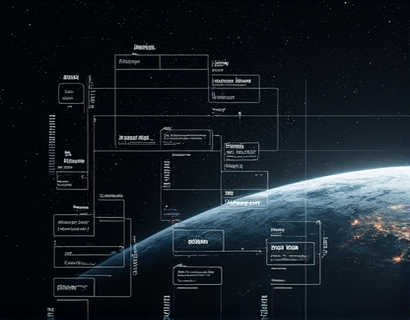Optimizing Team Management: A Comprehensive Dashboard for Leaders
In the fast-paced world of business and organizational management, the ability to efficiently oversee and manage large and diverse teams is crucial for success. Leaders face numerous challenges daily, from coordinating tasks and monitoring progress to fostering communication and ensuring alignment with organizational goals. To address these challenges, a comprehensive dashboard designed specifically for leaders can be a game-changer. This powerful tool is engineered to streamline operations, enhance communication, and empower informed decision-making, making it an indispensable resource for business leaders and organizational managers.
Understanding the Need for a Comprehensive Dashboard
The traditional methods of team management, such as spreadsheets, email, and manual reports, are often inadequate for the complexities of modern teams. These methods can lead to information silos, delayed responses, and a lack of real-time visibility. A comprehensive dashboard addresses these issues by providing a centralized platform where leaders can monitor key metrics, track project progress, and manage team interactions all in one place. This centralized approach not only saves time but also ensures that all team members are on the same page, reducing misunderstandings and increasing productivity.
Key Features of a Leader's Dashboard
A well-designed dashboard for team management includes a variety of features that cater to the diverse needs of leaders. Here are some of the essential components:
1. Real-Time Dashboard Views
Leaders need immediate access to critical information to make timely decisions. A real-time dashboard provides live updates on key performance indicators (KPIs), project statuses, and team activities. This instant visibility allows leaders to identify bottlenecks, celebrate successes, and take corrective actions swiftly.
2. Task and Project Management
Effective task and project management is at the core of any successful team. The dashboard should include features such as task assignment, deadline tracking, and progress monitoring. Leaders can create, assign, and track tasks seamlessly, ensuring that everyone is aware of their responsibilities and deadlines. This feature also helps in prioritizing work and allocating resources efficiently.
3. Communication Tools
Communication is vital for team cohesion and productivity. The dashboard should integrate robust communication tools, such as chat, announcements, and discussion forums. These tools facilitate seamless information flow, reduce the need for endless email threads, and foster a collaborative environment. Leaders can use these tools to keep team members informed, gather feedback, and maintain open lines of communication.
4. Reporting and Analytics
Data-driven decision-making is essential for leaders. The dashboard should offer comprehensive reporting and analytics capabilities, allowing leaders to generate custom reports and gain insights into team performance. Metrics such as productivity levels, task completion rates, and employee engagement can be visualized through charts and graphs, making it easier to identify trends and areas for improvement.
5. Resource Management
Effective resource management ensures that teams have the necessary tools and support to succeed. The dashboard should include features for managing resources such as budget tracking, time allocation, and access to tools and software. Leaders can monitor resource utilization and make informed decisions to optimize usage and reduce waste.
6. Employee Performance Tracking
Assessing and improving employee performance is a critical aspect of leadership. The dashboard should provide tools for setting performance goals, conducting regular evaluations, and providing feedback. This feature helps in identifying high performers and areas where employees may need additional support or training.
7. Integration Capabilities
To be truly effective, a leader's dashboard should integrate seamlessly with other tools and systems used by the organization. This includes CRM systems, HR platforms, and project management software. Seamless integration ensures a unified view of all data, eliminating the need for manual data entry and reducing the risk of errors.
Benefits of Using a Comprehensive Dashboard
The advantages of implementing a comprehensive dashboard for team management are numerous and significant:
1. Enhanced Visibility
Leaders gain a clear and comprehensive view of their team's activities, progress, and challenges. This visibility enables them to make informed decisions and take proactive measures to address issues before they escalate.
2. Improved Efficiency
By automating routine tasks and providing streamlined workflows, the dashboard helps leaders and team members focus on high-value activities. This leads to increased efficiency and productivity, allowing the team to achieve more in less time.
3. Better Communication
Robust communication tools within the dashboard foster a collaborative environment, reduce misunderstandings, and ensure that everyone is aligned with the team's goals and objectives.
4. Data-Driven Decision-Making
Access to real-time data and analytics empowers leaders to make evidence-based decisions. This data-driven approach reduces the risk of guesswork and ensures that strategies are based on solid insights.
5. Increased Employee Engagement
When employees have access to the information they need and can easily communicate with their peers and leaders, their engagement and job satisfaction tend to increase. This, in turn, leads to higher retention rates and better overall performance.
Implementing a Comprehensive Dashboard
Implementing a comprehensive dashboard requires careful planning and execution. Here are some steps to ensure a smooth transition:
1. Assess Current Processes
Begin by evaluating the current team management processes to identify pain points and areas for improvement. This assessment will help in determining the specific features and functionalities required in the dashboard.
2. Define Objectives
Clearly define the objectives you aim to achieve with the dashboard. Whether it's improving project delivery times, enhancing communication, or boosting employee engagement, having clear goals will guide the selection and customization of the dashboard.
3. Choose the Right Tool
Research and select a dashboard tool that aligns with your objectives and integrates well with existing systems. Consider factors such as user-friendliness, scalability, and customer support.
4. Customize and Configure
Tailor the dashboard to meet the specific needs of your team and organization. Customize dashboard layouts, set up alerts, and configure workflows to ensure that the tool works seamlessly for your team.
5. Train and Onboard Users
Provide comprehensive training and support to ensure that all team members are comfortable using the dashboard. Regular workshops and resources can help in maximizing the tool's potential.
6. Monitor and Iterate
Continuously monitor the dashboard's performance and gather feedback from users. Use this information to make iterative improvements and ensure that the dashboard remains a valuable asset to your team management strategy.
Conclusion
A comprehensive dashboard for team management is a powerful tool that can transform the way leaders oversee and manage their teams. By streamlining operations, enhancing communication, and enabling data-driven decision-making, such a dashboard can significantly boost productivity and efficiency. As businesses continue to grow and become more complex, the need for effective team management solutions becomes increasingly critical. Embracing a comprehensive dashboard is a strategic move that can provide a competitive edge and drive long-term success.










































